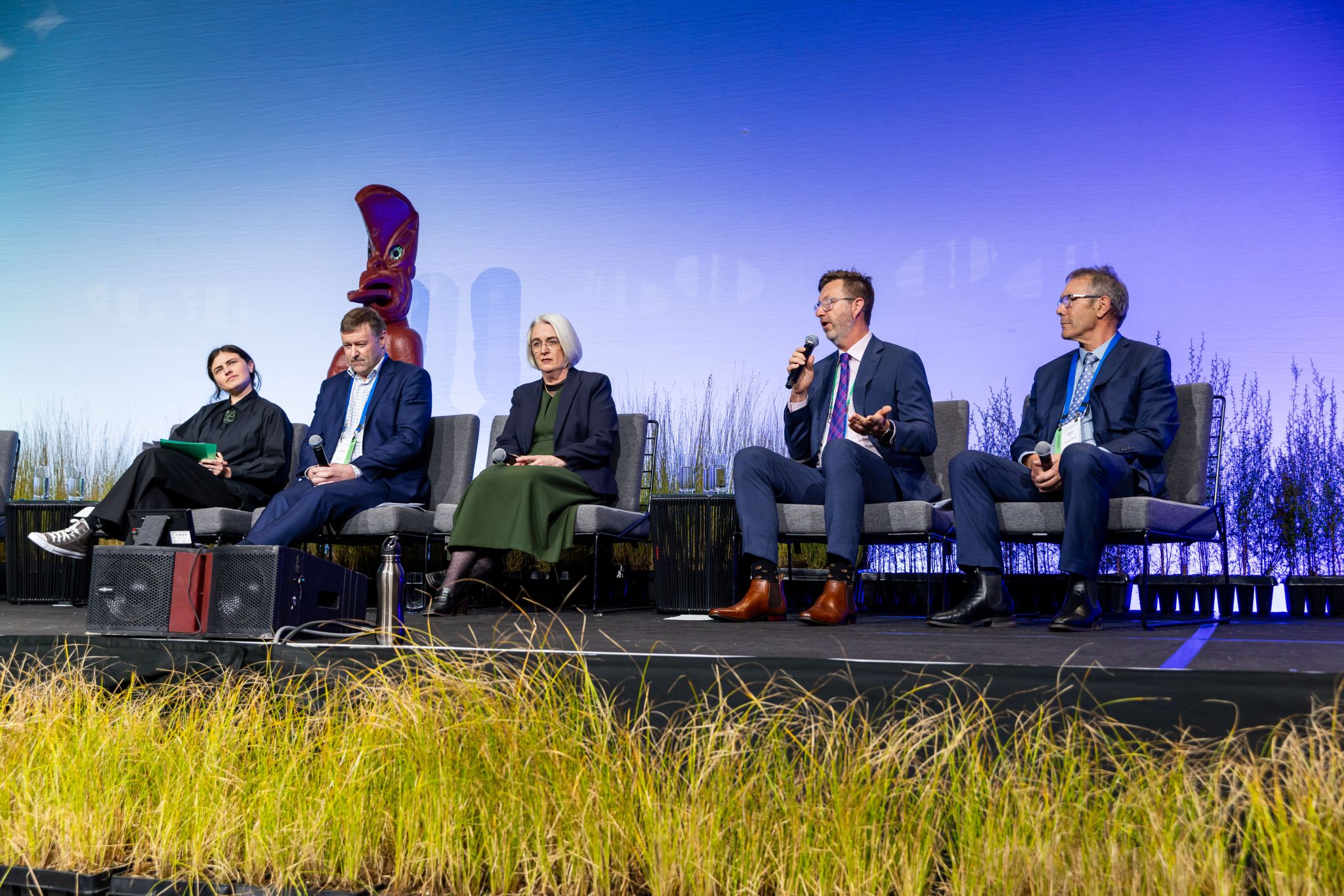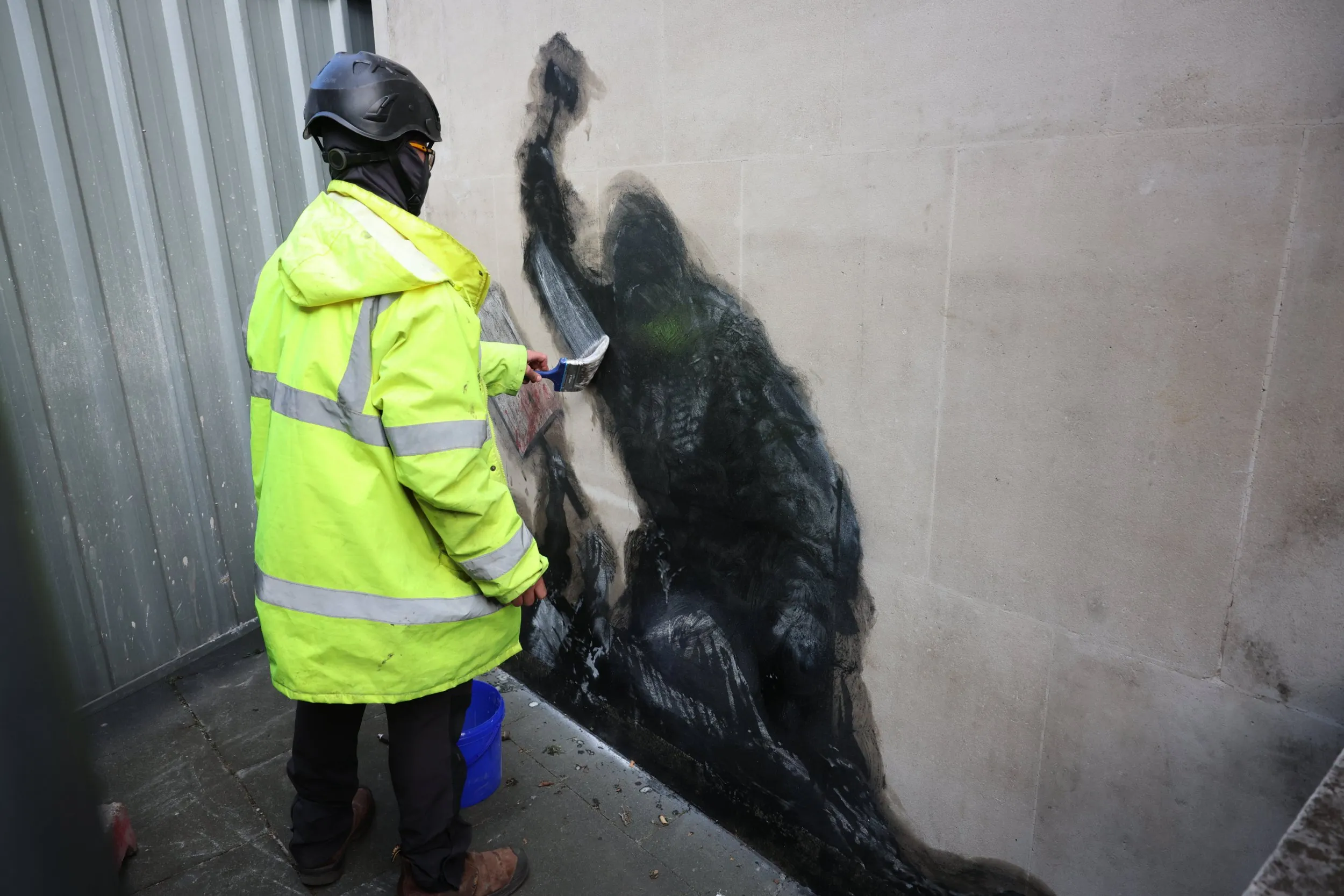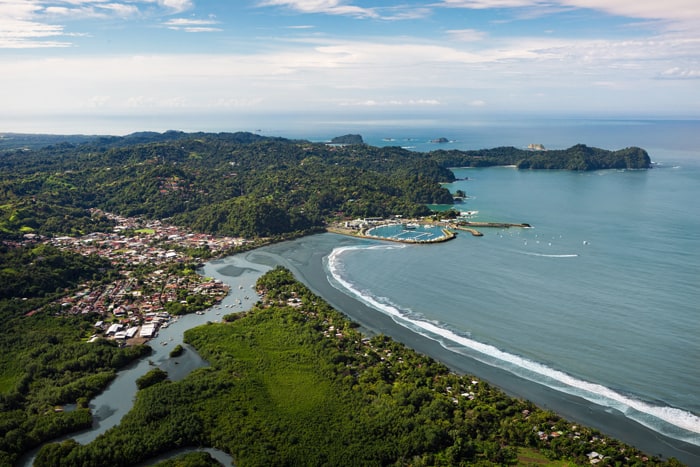By Marc Daalder
Copyright newsroom

Analysis: Five politicians discussing climate adaptation at the Climate Change and Business Conference in Auckland descended into political squabbling over golf courses and gravel on Monday, prompting sharp rebukes from conference attendees.
Green Party co-leader Chlöe Swarbrick, NZ First minister Mark Patterson, Act Parliamentary under-secretary Simon Court and MPs Deborah Russell (Labour) and Stuart Smith (National) were on the panel titled “Can we secure a cross-party approach?”
The answer, at least based on how the panel went, is a clear no. Patterson and Swarbrick clashed over deindustrialisation (not the topic of the panel), Smith ran into trouble with climate science, Court said giving up nine holes of the Takapuna golf course to protect 200 homes from flooding was a “really, really tough trade-off” and Russell conceded we’d all have to wait until next year to hear something substantive from Labour.
Speaking at the conference the next day, former Climate Change Commission chair Rod Carr said the politicians had been acting like toddlers and failed to look the issue in the eye.
“I love playing with my grandkids. One of the games I love playing with my grandkids is peek-a-boo. Mentally, peek-a-boo is a fascinating game because, in the mind of a two-year-old, when they put their hands in front of their eyes, you’ve disappeared. And when they move their hands, they appear. And I got the feeling we were playing peek-a-boo, except the two-year-olds were on stage,” he said, to widespread laughter and applause.
The MPs managed to agree on just one, high level issue – that central government alone won’t be able to pay for climate adaptation. Anything beyond that (whether managed retreat should be on the table, how responsibility for payment should be split, what role central government should play) found little common ground.
The panel got off to a rough start when Court was asked about the role of government intervention versus reliance on the market.
“We need to make space for water in some places. Auckland city is going through that right now where they’re challenging golfers like myself to say, ‘Hey, you’re going to have to lose nine holes off the Takapuna golf course to make space for water to provide for 200-odd homes to be safe from flooding’. These are really, really tough trade-offs,” he said, prompting somewhat derisive laughter from the assembled crowd of business leaders and sustainability professionals.
“The market, as we might conceive of it, isn’t always going to be able to resolve this. That’s why I think having a resource management system that makes it possible, but also having infrastructure funding and financing tools available so that councils can afford to pay for the infrastructure and maybe afford to exchange land rather than having to take away half our golf course.”
All three Government MPs brought up gravel management in riverbeds, arguing councils had failed to address the flood risk it caused. While gravel can build up, raising the level of the river and worsening flood events, councils do have gravel management plans. The risks posed by climate change go far beyond those posed by gravel.
“So far the majority of things I have heard from government MPs on this panel have been more concerned with gravel than it has been with climate adaptation,” Swarbrick said.
Notwithstanding her disappointment at the off-topic injection of gravel, Swarbrick herself later went off on a tangent about tax policy and the 2023 finding by IRD that the wealthiest Kiwi families face a lower effective tax rate than the average worker. She also responded to attacks by Patterson on the effects of energy policy on manufacturing closures in regional New Zealand.
Russell, when asked about Labour’s approach to adaptation issues, said the party would announce its policy. When pressed by moderator Kathryn Ryan about Labour’s position, she pointed to the previous government’s work on adaptation, though conceded that had been led by Green Party co-leader James Shaw, not a Labour minister.
Smith seemed to have just one thing on his mind for the bulk of the panel: Hurunui District Council’s approach to climate adaptation in Amberley Beach. The council there has purchased land 20 metres above sea level to serve as the base for future residential housing as sea-level rise and coastal inundation threaten the existing community.
Amberley was Smith’s go-to case study for adaptation, coming up three separate times – the final one prompting a rejoinder from Ryan, who told the National MP that “We’ve got to move on from Hurunui”.
When Smith finally shook Hurunui from his mind, he turned to downplaying the risks posed by climate change. He argued existing council practice, whereby many base climate risk assessments on a high-emissions scenario called RCP8.5 (or SSP5-8.5, for newer models), overstated the risks.
It is true that scientists have generally agreed an 8.5 pathway (which refers to 8.5 watts per square metre of radiative forcing in the atmosphere and corresponds to a temperature rise of more than 4C by the end of the century) is not a “business-as-usual” scenario.
However, where Smith went wrong was insisting that a 2.5 W/m2 pathway was more appropriate. Such scenarios entail a world where emissions fall drastically and temperature rise is limited to well below 2C by 2100. The world is just as far from such a pathway as it is from RCP8.5.
Professor Elizabeth Robinson, acting dean of the Global School of Sustainability at the London School of Economics, addressed the conference after the politicians panel and said a 7 W/m2 (global warming above 3C) was most closely aligned with current policies. Other scientists have said a 4.5 scenario (warming of around 2.7C) is a good fit.
However, climate modelling is an evolving field and based on some inherent uncertainties. How the complex global climate system will respond to growing emissions and rising temperatures is not fully understood and the pathway scenarios don’t include the impacts of so-called tipping points, which cause irreversible changes and sometimes self-reinforcing feedbacks.
Therefore, even a scenario where emissions follow a business-as-usual pathway (which should lead to around 3C of warming) could set off unexpected or poorly understood processes which lead to more warming or worse impacts than projected.
Moreover, experts have encouraged councils to prepare for higher-impact scenarios because that is the conventional approach to risk management. Stop banks are built to deal with 1-in-100 year floods, even though they are not likely, rather than only a “business-as-usual” annual flood.
Smith’s questioning of the current approach to risk was echoed, in different ways, by his government colleagues. Court too worried about overstated risks, telling the audience, “We’re not all at risk of going underwater here, everybody.”
Patterson, meanwhile, said New Zealand First was “not a big fan of managed retreat”, in which households or parts of communities are moved out of the way of natural hazards, as happened in Matatā.
Instead, he said fortifications or engineered protections should be implemented to protect homes and businesses.
Ryan asked about what should be done with public or semi-public infrastructure at risk of climate devastation, like airports and roads. On these too, Patterson said they should be protected, not moved.
What if the risks were too great and they could not be effectively protected?
“If you get the worst case scenarios playing out that’s going to end badly in a lot of places, isn’t it?” Patterson replied.
And, that’s the point.



